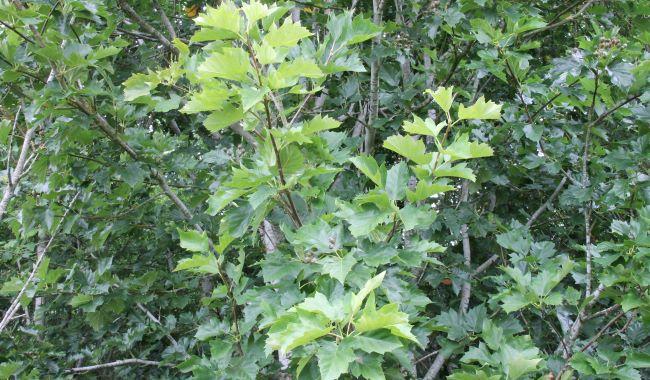
The wild service tree
The wild service tree is an intriguing species. Once widespread it became a victim of forest clearance over the centuries and was confined mostly to ancient woodland. Now it is experiencing a renaissance locally thanks to our Heart of England Forest planting policy.
The wild service tree and the true service tree
The wild service tree, or sorbus torminalis, should not be confused with sorbus domestica – the true service tree, which is distinctly different with its pinnate leaf structure and rowan-like shape.
A deciduous broadleaf tree native to the UK and parts of Europe, Africa and Asia, the leaf buds of the wild service tree are rounded and green, like little peas, and form on short leaf stalks. The lobed leaves are similar to maple with three or four unequal lobes and a sharply toothed margin. They turn a rich, coppery red or russet colour before falling, so autumn is a great time to see the foliage at its colourful best.
With mature wild service trees growing up to 25 metres in height, their bark is brown and patterned with cracked square plates. The twigs are slender, straight and shiny grey-brown in colour, terminating in rounded green buds of up to 5mm long.
Fabulous flowers and fabled fruit
The wild service tree is hermaphrodite, meaning both male and female reproductive parts are contained within each of its bright white flowers. These form in loose clusters in late spring to early summer and are pollinated by insects.
Another way they can propagate asexually is by a process called ‘suckering’. A sucker is a shoot that arises from a bud on an underground root and because they both shoots and roots, these can be used to propagate the tree autonomously.
Once pollinated, the flowers develop into green-brown oval fruits that are 10–15 mm in diameter and patterned with small pale spots as they reach maturity in mid to late autumn. Sometimes called ‘chequers’, these fruits gave the wild service tree its alternative name of the ‘chequers tree’ in the old English vernacular.
They were often used to produce a potent beer, hence the naming of some pubs and inns as ‘Chequers’, and even giving the Prime Minister’s country residence its name! It’s also thought that the name ‘service’ derives from the Latin name for beer – cervisia – and early physicians used infusions made from the fruits to treat colic and dysentery.

Where to find the wild service tree
Visitors to the Heart of England Forest can find some excellent examples in Dorothy’s Wood, with many bearing fruit this year. Head Forester, Stephen Coffey, also reports that 0.5% of our newly planted trees are wild service, so no less than 325 were added to the Forest during the last planting season.
Stephen says; “We are participating in a wild service tree provenance trial with two other land owners, coordinated by Woodland Heritage, and are planting nine different provenances from seed collected in England, France and Germany. One provenance is from our own woods at Spernal where there is a high proportion of wild service trees.”
The future of this renowned species certainly looks assured in the Heart of England Forest.



